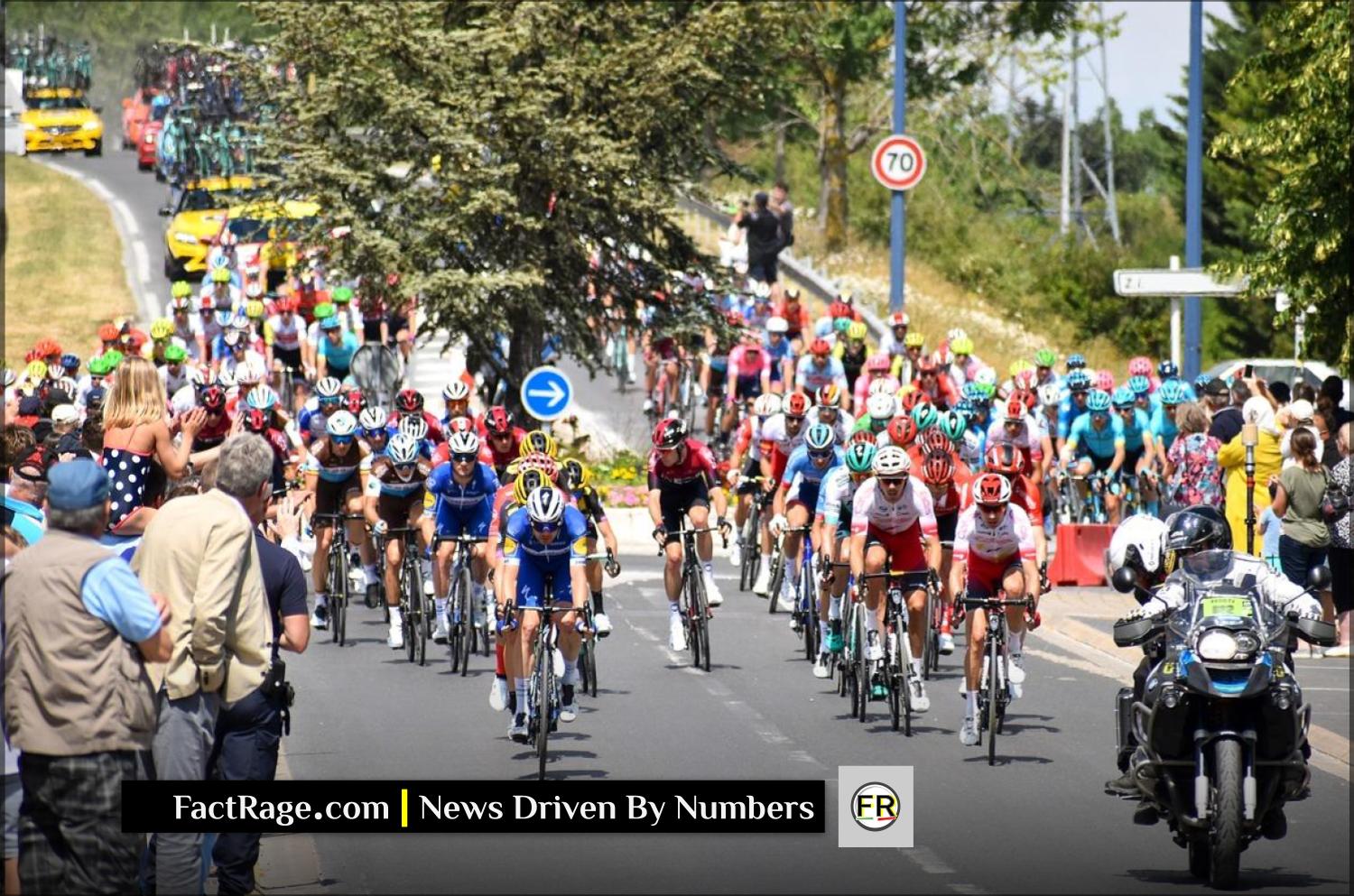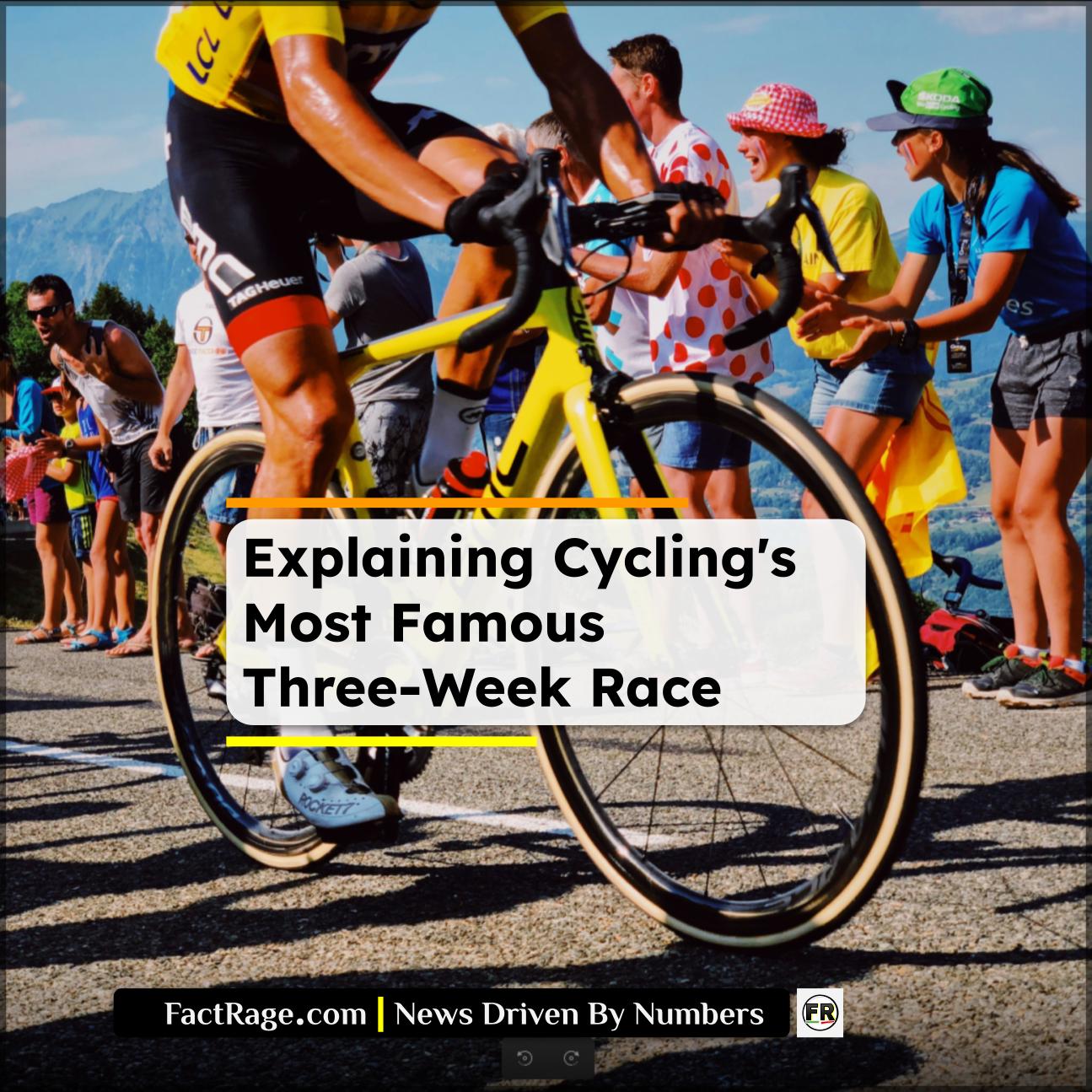FRANCE – For three weeks in July, the world of professional cycling turns its attention to France for one of the most prestigious and grueling events in all of sports.
- The Basics – The Tour de France is a 21-stage race covering approximately 3,500 kilometers. The rider with the lowest cumulative time across all stages wins the race.
- Team Sport – While one rider wins, cycling is a team sport. Each of the 22 teams consists of eight riders with specific roles, all working to support a common goal.
- More Than One Winner – Beyond the overall winner, there are four major competitions, each with its own iconic colored jersey, recognizing leaders in different categories like sprinting and climbing.
The Tour de France is a complex event, a “race within a race” with multiple objectives at play simultaneously. For those new to the sport, understanding the basic structure is key to appreciating the unfolding drama.
Who’s Who in the Peloton?

A professional cycling team at the Tour de France is a finely tuned machine with each of the eight riders playing a specific part. The main group of riders is called the peloton.
- Team Leader (or GC contender): This is the rider the team believes has the best chance of winning the overall race, known as the General Classification (GC). The entire team’s strategy is built around protecting and assisting this rider.
- Domestique: Translated as “servant,” these are the workhorses of the team. They shield the leader from the wind by riding in front of them (drafting), fetch water bottles from the team car, and chase down attacks from rival teams. Their personal ambitions are sacrificed for the leader.
- Sprinter: These powerful riders specialize in explosive, high-speed finishes on flat stages. The team works to protect the sprinter and position them perfectly in the final few hundred meters to launch their attack for a stage win.
- Climber: Lighter and leaner riders who excel on the grueling mountain stages. While they might also be the team leader, some are specialists who aim for stage wins in the high mountains or compete for the King of the Mountains classification.
The Battle for the Jerseys
While the yellow jersey is the most famous, four different classifications are contested throughout the race, each with a distinct jersey awarded to its leader at the end of each stage.
- The Yellow Jersey (Maillot Jaune): This is the most coveted prize. It is worn by the rider with the lowest overall time in the General Classification.
- The Green Jersey (Maillot Vert): This is the points classification, often called the sprinters’ jersey. Riders earn points for high finishes in stages and at intermediate sprint points along the route. Stages are categorized as flat, hilly, or mountain, with the most points available on flat stages to favor sprinters.
- The Polka Dot Jersey: Awarded to the “King of the Mountains.” Points are given to the first riders to reach the summit of designated climbs. Climbs are ranked by difficulty, from Category 4 (easiest) to Hors Catégorie (beyond categorization), with harder climbs offering more points.
- The White Jersey (Maillot Blanc): This recognizes the best young rider in the race. It follows the same rules as the yellow jersey but is only open to riders who are under 26 years of age.
What Is the Basic Race Strategy?
The core strategy of the Tour de France revolves around energy conservation and tactical positioning. A key concept is “drafting,” where riders follow closely behind others to shelter from wind resistance, which can save a significant amount of energy over the course of a long race.
Teams will often control the front of the peloton to manage the pace, either to set up their sprinter for a stage win or to protect their GC leader from danger. Another common tactic is the “breakaway,” where one or more riders attack from the main group, hoping to stay away and win the stage. The peloton then has to decide whether to chase them down or let them go, a calculation that depends on who is in the breakaway and what threat they pose to the overall race leaders. The final stages, particularly in the high mountains, are often where the race for the yellow jersey is ultimately decided, as the challenging terrain makes it difficult for a whole team to protect their leader, leaving it to individual strength and endurance.













